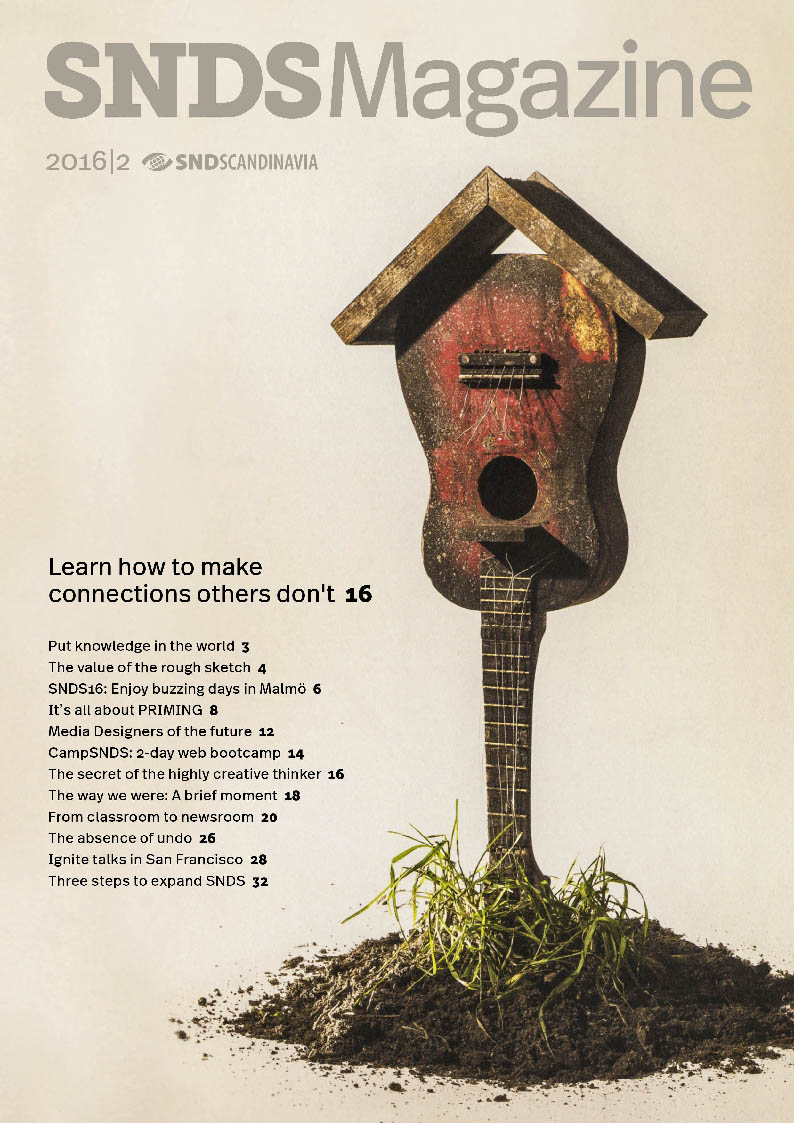Editorial from SNDS Magazine no. 2, 2016
Complexity is a fact of life, so we must learn to deal with it
– Donald A. Norman*
In his book Living With Complexity Donald A. Norman argues against the dogma that simple is always better. His area of interest is the tools we use in computing and in everyday life – tools that are often seen as too complicated.
But ‘complex’ and ‘complicated’ are two very different things. The world may be complex but the tools and technology we use to get through the day should not be complicated to operate. And it is up to both designers and users to make them manageable and understandable.
One way to deal with the complexity of life is to “put the knowledge in the world” – by adding hints and suggestions that guide our way (like lines on the floor in aircrafts showing the way to the nearest exit) or by learning from the knowledge other people put in the world.
In any case, it is not a solution to make the tools simpler because we want that complexity:
“Complexity is good. Simplicity is misleading. The good life is complex, rich, and rewarding – but only if it is understandable, sensible, and meaningful,” Norman says.
SNDSF 2016
Complexity is also a basic condition for the news and media business, if the SNDSF conference held April 7–9 in San Francisco is anything to judge by. With a two-day, four-track schedule it was maybe not complicated but then at least difficult even to choose which sessions to go to.
My own personal impression of the subjects – which took up a whopping nine pages in the programme – was that our business is headed in many directions.
There were talks about handling big data; building connections and co-creation; there were thoughts about visual reporting compared to other kinds of reporting; and even hands-on tips to write html code for the sight disabled. We also saw hundreds of magnificent, if not exactly new, front pages of iconic Spanish Metropoli. For the start-up designer or journalist, there was advice on how to be a team of one. “One is the loneliest number,” Rebecca Monson said – but it’s also great fun and has its advantages.
As varied as the full programme was the Saturday session with “Ignite Talks” – 15 speakers, 5 minutes each. Moderator Steve Dorsey promised us a complete conference in less than two hours – or at least a glimpse of some of the complexities out there (p. 28).
The final keynote speakers from IDEO, Bryan Walker and Zena Barakat, commented directly on the theme of the SNDSF workshop: “Evolving our craft” – when they closed the programme with the words: “To evolve journalism, we as designers must evolve”.
In which direction we must evolve, is of course up to each individual or organisation. One of the (too) few Scandinavians to attend SNDSF, Lotta Ek, Art Director at Dagens Nyheter, Sweden, was not in doubt when reading the signals in the SNDSF programme:
“The conference had such heavy focus on digital that it almost seemed as if print was already dead and gone,” she says.
Former SNDS President, Anders Tapola from Smålandsposten, Sweden, describes his impressions of the SNDSF conference in these words:
“My first SND workshop was in Washington D.C. in 2003. The focus, as I remember, was how to be relevant in the paper when all the fast news channels, like tv, radio and the web already had told the actual news story the day before. Juan Antonio Giner gave an excellent speach on that theme.
SND San Francisco 2016: Today much focus seems to be on data and specially so-called big data, how to visualize the data and how to get the audience to interact with this big data. And focus is of course on the digital platforms. How to be relevant in the paper seems nowadays as a non-issue when instead everyone desperately try to be inventive on the digital platforms.
The only question is whether they are relevant?”
In this issue
Putting knowledge in the world is also about teaching other people what you know. This is our main focus in this issue – education, or how to learn from others.
Several articles draw from inspiration found in books – like Daniel Kahneman’s Thinking, Fast and Slow (p. 8); Nielsen & Thurber’s brand new The secret of the highly creative thinker from which we also borrowed our cover illustration (p. 16); and we review a new book about Contemporary Danish Illustration (p. 26).
We introduce 20 new media designers from NTNU in Gjøvik, Norway (p. 12) and report from a new course in editorial design and interactive storytelling in the digital domain at DMJX, Copenhagen. Last but not least, a brand new initiative will be launched in connection with the SNDS16 conference in Malmö: a 2-day web workshop called CampSNDS (p. 14).
And there’s more; enjoy it all.
Oh, and remember – don’t miss out on the low prices for registering early to the SNDS16 conference – head over to page 6–8 to learn more. And have a great summer.
Lars Pryds
Editor, SNDS Magazine
* In: Living with Complexity, MIT Press, Cambridge, MA, 2011
